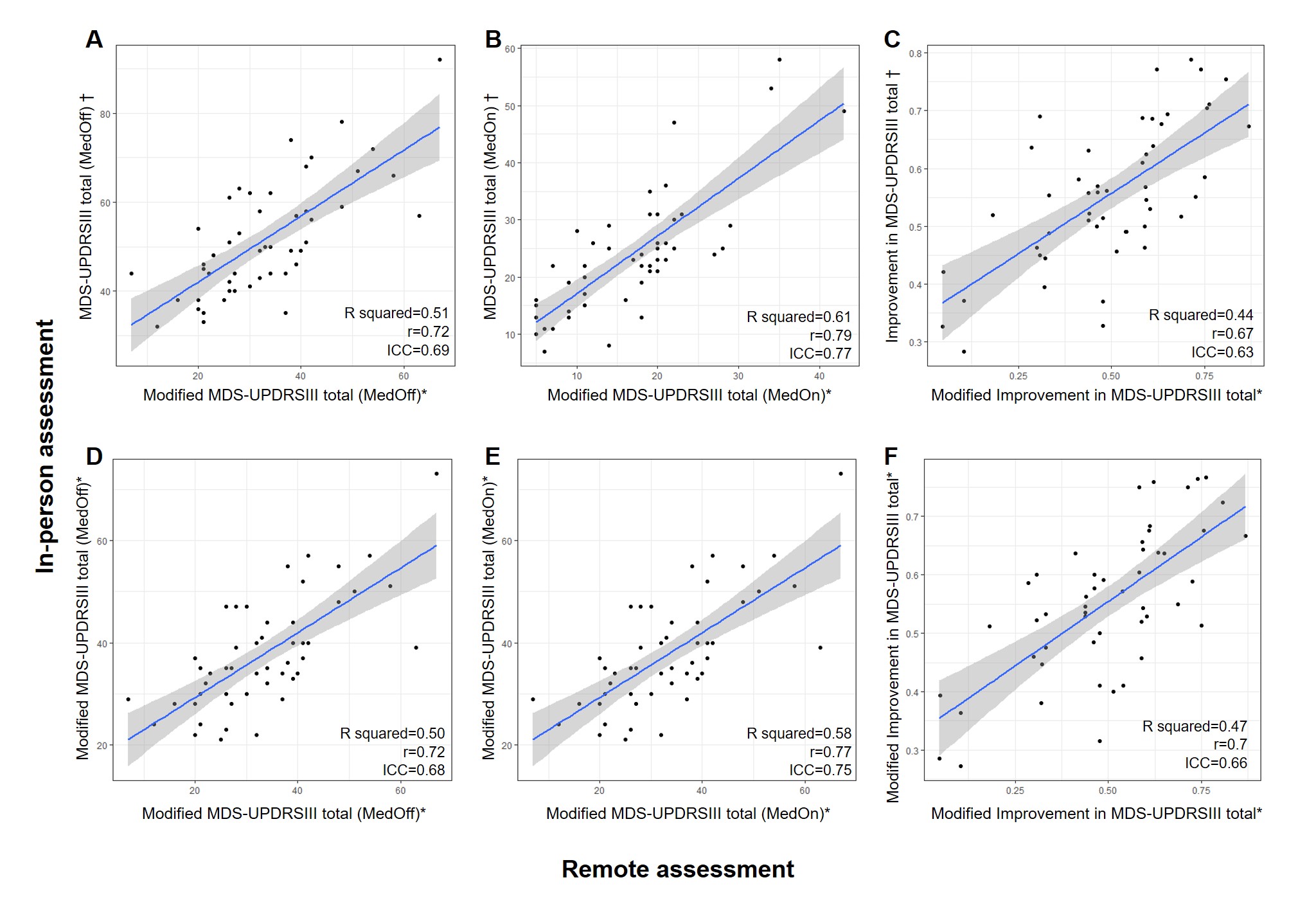Category: Parkinsonism, Others
Objective: To demonstrate the feasibility, reliability, and value of the remote L-dopa challenge test (LCT) in candidate screening for deep brain stimulation (DBS) in patients with Parkinson’s disease (PwPD).
Background: LCT is widely used for various indications including preoperative PwPD screening for DBS, which evaluates the PD motor symptom responsiveness to a given dose of L-dopa. Remote motor assessment enables clinicians to better monitor the clinical outcomes of PwPD. While the majority items of the MDS Unified Parkinson’s Disease Rating Scale part III (MDS-UPDRS-III) can be conducted remotely, rigidity and postural stability requiring hands-on assessment are less feasible. Although a modified UPDRS-III omitting rigidity and retropulsion testing items for remote assessment has been proposed1, its validity and reliability has not been independently evaluated.
Method: For PwPD candidates for DBS surgery, two single-dose, supra-threshold (150% of the regular morning equivalent dose of the L-dopa) LCTs2 were successively performed at home through a video-based PD telemedicine platform3 and after inpatient admission. a modified MDS UPDRS-III omitting items of rigidity and postural stability was performed remotely, while the standard MDS UPDRS-III was performed for in-person assessment. The intraclass correlation coefficient (ICC) and 95% confidence intervals (CI) were calculated to evaluate agreement between remote and in-person outcome measures.
Results: 60 patients were enrolled (mean age: 63.2 ± 8.6 years; mean disease duration: 11.6 ± 5.4 years; 52.7% women) and 55 (91%) completed both remote and in-person motor assessments with an interval of 3.0 ± 2.5 weeks. We observed a good correlation (ICC 0.69, 95% CI: 0.51–0.81) between remote and in-person motor assessment in the off-medication state, an excellent correlation (ICC 0.77, 95% CI: 0.63–0.86) in the on-medication state, and a good correlation (ICC 0.63, 95% CI: 0.43–0.77) regarding L-dopa responsiveness. The mean estimated cost for a virtual visit was 91% (21.0 vs. 276.9 RMB, p < 0.001) less than an in-person visit, and the time spent was reduced by 92% for a virtual visit compared to an in-person visit (0.7 vs. 8.4 hours, p < 0.001).
Conclusion: The remote LCT via video-based PD telemedicine platform was feasible and reliable in assessing motor symptoms and PwPDs’ eligibility for DBS surgery.
References: 1. Abdolahi A, Scoglio N, Killoran A, Dorsey ER, Biglan KM. Potential reliability and validity of a modified version of the Unified Parkinson’s Disease Rating Scale that could be administered remotely. Parkinsonism Relat Disord 2013;19(2):218-221.
2. Lin Z, Zhang X, Wang L, et al. Revisiting the L-Dopa Response as a Predictor of Motor Outcomes After Deep Brain Stimulation in Parkinson’s Disease. Front Hum Neurosci 2021;15:604433.
3. Xu X, Zeng Z, Qi Y, et al. Remote video-based outcome measures of patients with Parkinson’s disease after deep brain stimulation using smartphones: a pilot study. Neurosurg Focus 2021;51(5):E2.
To cite this abstract in AMA style:
Z. Zeng, W. Shi, X. Wan, Z. Lin, Z. Chen, C. Zhang. Feasibility, Reliability and Value of Remote Levodopa Challenge Test in Parkinson’s Disease [abstract]. Mov Disord. 2023; 38 (suppl 1). https://www.mdsabstracts.org/abstract/feasibility-reliability-and-value-of-remote-levodopa-challenge-test-in-parkinsons-disease/. Accessed April 1, 2025.« Back to 2023 International Congress
MDS Abstracts - https://www.mdsabstracts.org/abstract/feasibility-reliability-and-value-of-remote-levodopa-challenge-test-in-parkinsons-disease/

